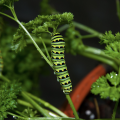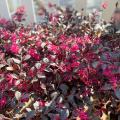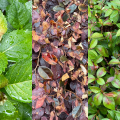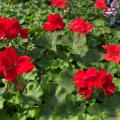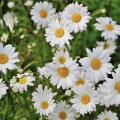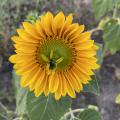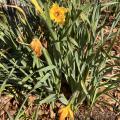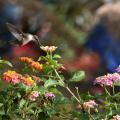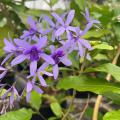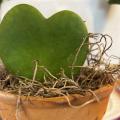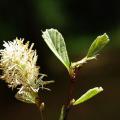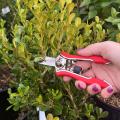News Filed Under Flower Gardens
Did you know that certain plants provide food to certain butterflies? Just like adult and baby humans eat different things, the same applies to butterflies!
Every year, I look for ways to add interest to my front porch with colorful hanging baskets, and there are many different plant choices and combinations that make this possible. One of my favorite hanging basket combinations is Supertunia petunias and Superbells.
One thing we know we can count on in the South is that it’s going to get hot. It is useful to include plants in your landscape that can handle the hot and dry conditions.
Loropetalum is a drought-tolerant plant that adds rich color and charm to your landscape.
RAYMOND, Miss. -- The hard freeze that swept Mississippi on March 19 and 20 dampened some of spring’s early displays and left many landscape plants with unsightly cold damage. Now, homeowners are wondering what to do about their landscape plants that lost their leaves or have brown-tipped or brown, shriveled leaves.
Eddie Smith is the new face and driving force of the Southern Gardening family of resources that includes weekly videos, newspaper columns, guest appearances and social media posts focused on gardening in Mississippi.
I believe the geranium is one of the most popular landscape plants in the South. I see them at almost every garden center or nursery I visit. I also remember as a kid seeing my grandmother’s potted geranium in a container on her front porch. It had bright-red flowers.
After an unseasonal cold snap in March, spring has officially started and the warmer weather is here to stay– at least for a little while. Hopefully, the cold didn’t damage your plants! Working on your yard is a great excuse to spend time outside now that the weather is nice. Here are a few things you can work on in your landscape for the month of April:
Weeds are often defined as being any plant out of place, but that definition never sat well with me. This simplistic definition seems to emphasize the aggressiveness of plants that don’t behave in the garden. For example, I’ve never heard anyone having problems with hydrangeas popping up in the landscape unexpectedly.
I’m a fan of whatever plants happens to be in bloom at any given time, but sunflowers are definitely one of my top five favorites, especially for use in arrangements. Last summer, I decided I wanted to have sunflowers every week until frost.
For a few short weeks, daffodils grace the planet with their beauty and remind us of warm weather right around the corner.
Azaleas are starting to produce their beautiful flowers in my landscape, and it is a welcome sight after a few months of cold weather. Like many of your azaleas, mine had some tender, new growth that suffered cold damage from the freezing temperatures we got last December. I hope you did the right thing and did not do any pruning to your azaleas yet.
It’s time once again to clean those hummingbird feeders and cook up the sugar water. In Mississippi, we can set our feeders out in early March as hummingbirds are migrating north from southern climes. Providing food in backyards is important, as these birds need to consume half their body weight each day.
I woke up to a dusting of yellow pollen on my car this week, the true sign that spring is on its way! Several flowers are blooming, making the world a little more vibrant after a cold, gray winter.
Go down the garden section of any home improvement store, and you will find a dizzying array of fertilizer options available to help you reach your garden goals. But which one should you choose?
The numbers on each bag of fertilizer mean something different, so let’s take some of the confusion out of this common problem.
After a dreary winter comes every gardener’s favorite time of year: spring! Here are some hot plants you should try this season. Some varieties are fairly new, while others are making quite a comeback.
Valentine’s Day is a time for people around the world to profess their love for someone or, like most of us, our love for our gardens!
January can feel like a long month for me. The holiday bustle is over, cold temperatures settle in, and the sky turns grey for days on end. But it doesn’t stay that way for long.
BILOXI, Miss. -- Gardening and floral design enthusiasts and professionals can enjoy a public lecture by Martha Whitney Butler, a Bay St. Louis floral designer. Butler will deliver a floral design demonstration that includes techniques based on sustainable floral design practices, as well as her experience in art history and the use of antique and vintage floral containers.
Exceptionally low temperatures this winter caused more cold damage than our typical, milder winters. But try not to panic and prune as soon as you see damage. It is best to let the plant heal and recover what healthy tissue it still has, and then prune the dead parts a little later.
As you walk around the landscape in January and look forward to the joy of starting a flower or vegetable garden, don’t overlook what you are stepping on. Healthy, productive plants require healthy soil. While soil may not be as eye-catching as narcissus or redbud flowers, it does require your attention.

